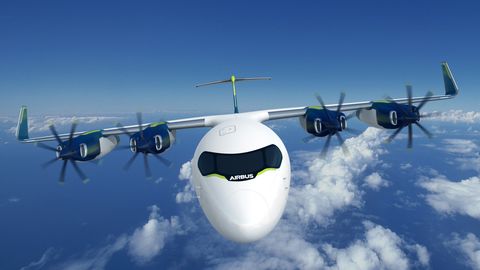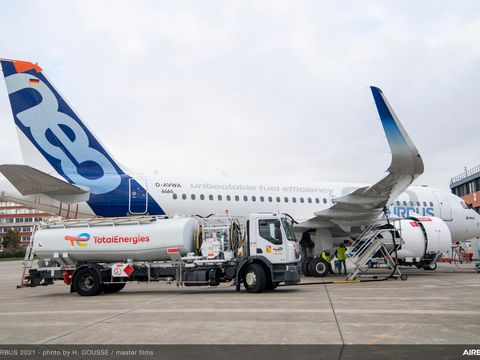What is sustainable aviation fuel?
Why SAF is a key pathway for aviation emissions reduction
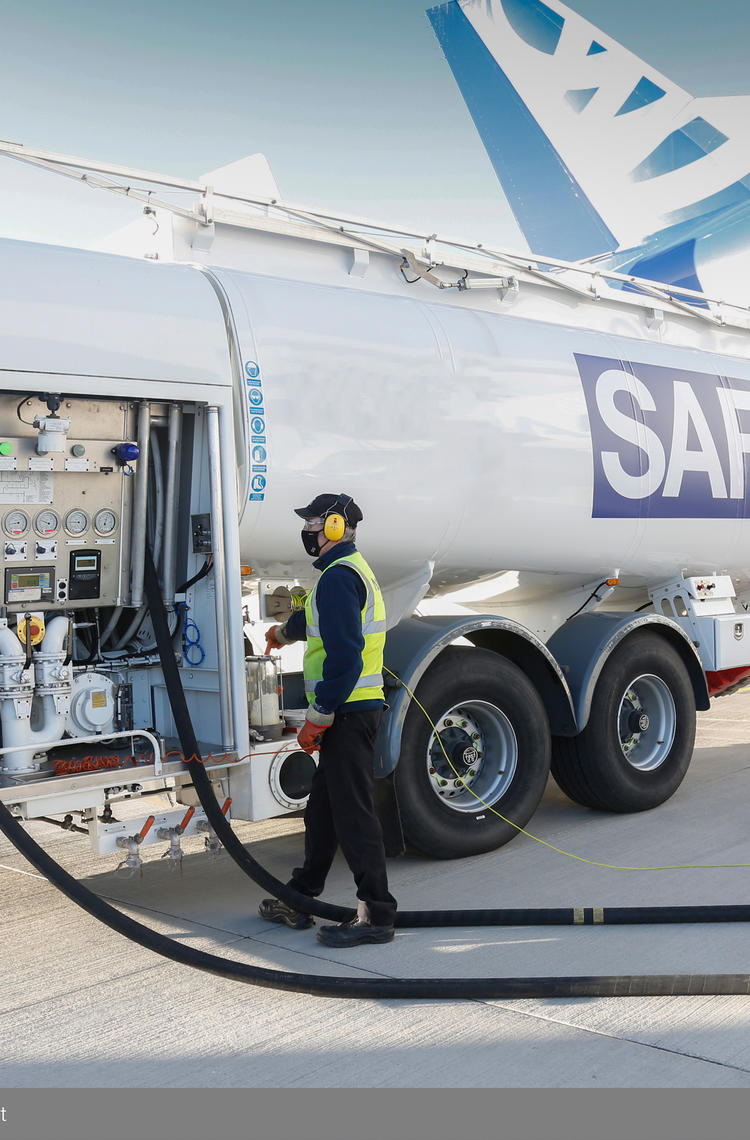
What makes SAF sustainable?
A new generation of fuels
For almost a century, aircraft have been fueled by kerosene. Now, a new generation of sustainable aviation fuels has the potential to halve the aviation industry’s carbon emissions by 2050.
Sustainable aviation fuel (SAF) is a synthetic fuel. In order to be considered sustainable, it must be made from renewable sources or feedstocks, such as used cooking oils, fats, plant oils, municipal, agricultural and forestry waste. It must also meet a set of stringent sustainability requirements including regulations set by ICAO’s CORSIA scheme and the EU Renewable Energy Directive (RED). These requirements include food security, water management and human rights considerations. For example, SAF certification bodies independently verify that feedstocks for SAF do not divert resources needed for food production.
How is SAF made?
ASTM International, a global standards and testing body, has approved eight technical pathways for the production of SAF. Three of the most common methods of SAF production are:
- HEFA (Hydrotreated Esters and Fatty Acids): The HEFA process refines vegetable oils, waste oils, or fats into SAF through hydrotreating and hydroprocessing.
- Alcohol-to-Jet: Alcohol-to-Jet (AtJ) converts alcohols such as ethanol and iso-butanol into SAF by removing the oxygen and linking the molecules together.
- eFuels: SAF can be produced using hydrogen, capturing carbon dioxide, and using renewable electricity to create synthetic fuels. This type of SAF is sometimes referred to as eFuel or Power-to-Liquid (PtL).
Not all production methods and feedstocks are created equal and some SAF feedstocks unlock greater emissions savings across the lifecycle than others. Nonetheless, exploring different methods will help the SAF industry to scale, improving SAF availability and supply.
SAF explained
Bitesized SAF basics
-
 1 - What is SAF ?
1 - What is SAF ?
1 - What is SAF ?
Sustainable aviation fuel (SAF) is a renewable jet fuel that can reduce CO2 emissions by 80% on average and is being developed to eventually power aircraft with up to 100% SAF, without the need for blending with fossil fuels. This video illustrates what SAF is and its use in aircraft today.
-
 2 - How is SAF made ?
2 - How is SAF made ?
2 - How is SAF made ?
Sustainable aviation fuel (SAF) is made by converting carbon dioxide into jet fuel through various processes, offering an average 80% reduction in net carbon emissions, and is then blended with regular jet fuel for use. This video explains three ways it can be done.
-
 3 - Why SAF ?
3 - Why SAF ?
3 - Why SAF ?
Sustainable aviation fuel (SAF) differs from conventional fossil fuels by using raw materials and various processes that adhere to strict internationally-recognised sustainability criteria and supporting economic growth, while fossil fuels release carbon stored underground for millions of years. This video outlines the differences.
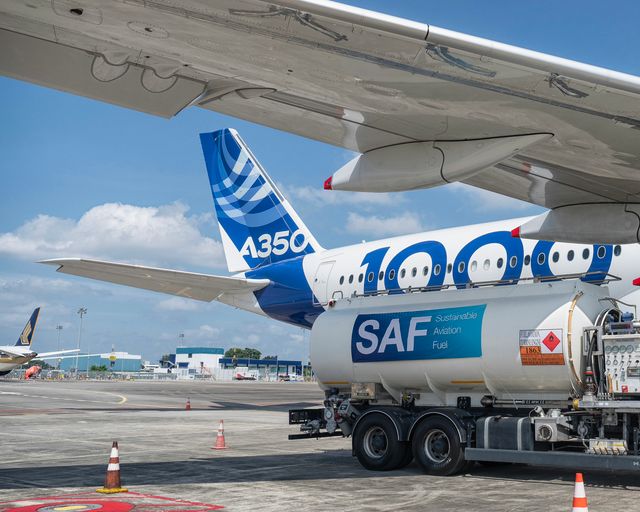

What are the benefits of SAF?
How SAF stands out
Emissions reduction over the lifecycle:
Today SAF can reduce emissions by up to 80% throughout its lifecycle compared to conventional jet fuel. This depends on the feedstock, and could increase as new production pathways come to market.
Compatible with existing engines:
SAF is also a solution that can be deployed today. Blended SAF (up to 50%) has the same characteristics as traditional jet fuel and can be used in existing engines without modifications.
No new infrastructure required:
SAF can be used in airports today, without the need to modify airport infrastructure.
Potential to scale with the right support:
SAF production can be scaled with government and regulatory collaboration and coordinated policies and incentives. Solving the supply and demand challenge will help unlock the potential of SAF.
What are the challenges facing the widespread adoption of SAF?
The main challenge remains the emergence of a market to generalise the use of SAF. There is both a demand and supply challenge.
- Cost of SAF: Even though the quantity of SAF available has increased in recent years, demand remains suppressed due to the higher cost of SAF compared to kerosene. The industry has to address this disparity and reduce the price gap with traditional fuel.
- Policies and regulatory frameworks needed: SAF development and adoption is hindered by a lack of consistent and supportive policies, as well as clear and stable.
- Availability of SAF: SAF production has dramatically increased in recent years but SAF still accounts for a very small portion of globally consumed jet fuel. In the long term, significant investments in new facilities are needed to scale up production.
- Availability of SAF feedstocks: Securing sustainable and scalable feedstocks from which to produce SAF is a major challenge. Ensuring that these feedstocks do not compete with food production or negatively impact ecosystems is a key consideration which further limits availability of viable feedstocks.
- Technological maturity: While several SAF production pathways exist, some are more nascent than others. Continuous innovation is needed to improve production efficiency and reduce costs. The certification process can also take time.
What is Airbus’ role in the SAF ecosystem?
SAF is considered by the leading aviation authorities and regulatory bodies as a key contributor to reach the industry’s target of net-zero carbon emissions by 2050, as set by ICAO, ATAG and IATA. Airbus agrees that SAF represents a crucial pathway to reducing the aviation sector’s greenhouse gas emissions and is committed to advancing SAF use across the industry.
Airbus is acting as a catalyst to encourage the uptake of SAF and to promote increased use of SAF. From deploying SAF in its own operations to making strategic partnerships and investments, Airbus is acting in a number of ways to foster the growth of the SAF ecosystem.
The latest on SAF at Airbus
In the spotlight
-

How Book and Claim enables SAF use for HEMS operations
Web Story
Helicopters
Airbus Helicopters and SAF Hélicoptères are using the Book and Claim system to support the accessibility of SAF for EMS missions in Catalonia. -
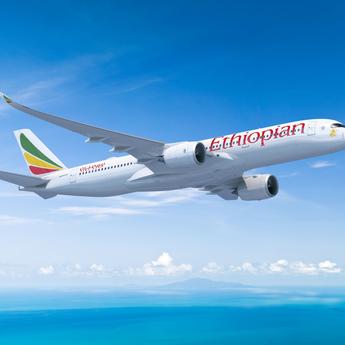
Ethiopian Airlines orders six additional Airbus A350-900s
Press Release
Commercial Aircraft
-
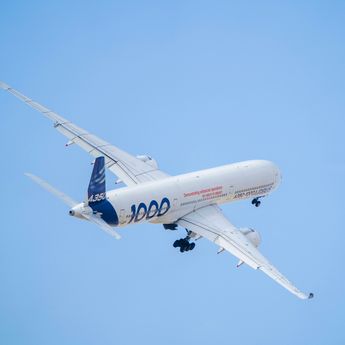
Showcasing multiple decarbonisation levers at Dubai Airshow
Web Story
Sustainability
-
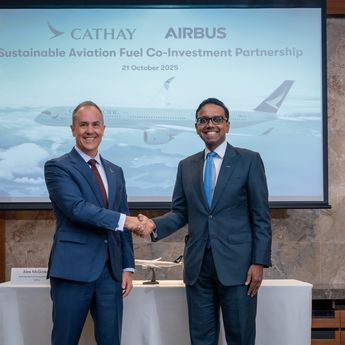
Airbus and Cathay form co-investment partnership for scaling sustainable aviation…
Press Release
Sustainability
-

Improving the world we live in with AI-powered products
Web Story
Innovation
